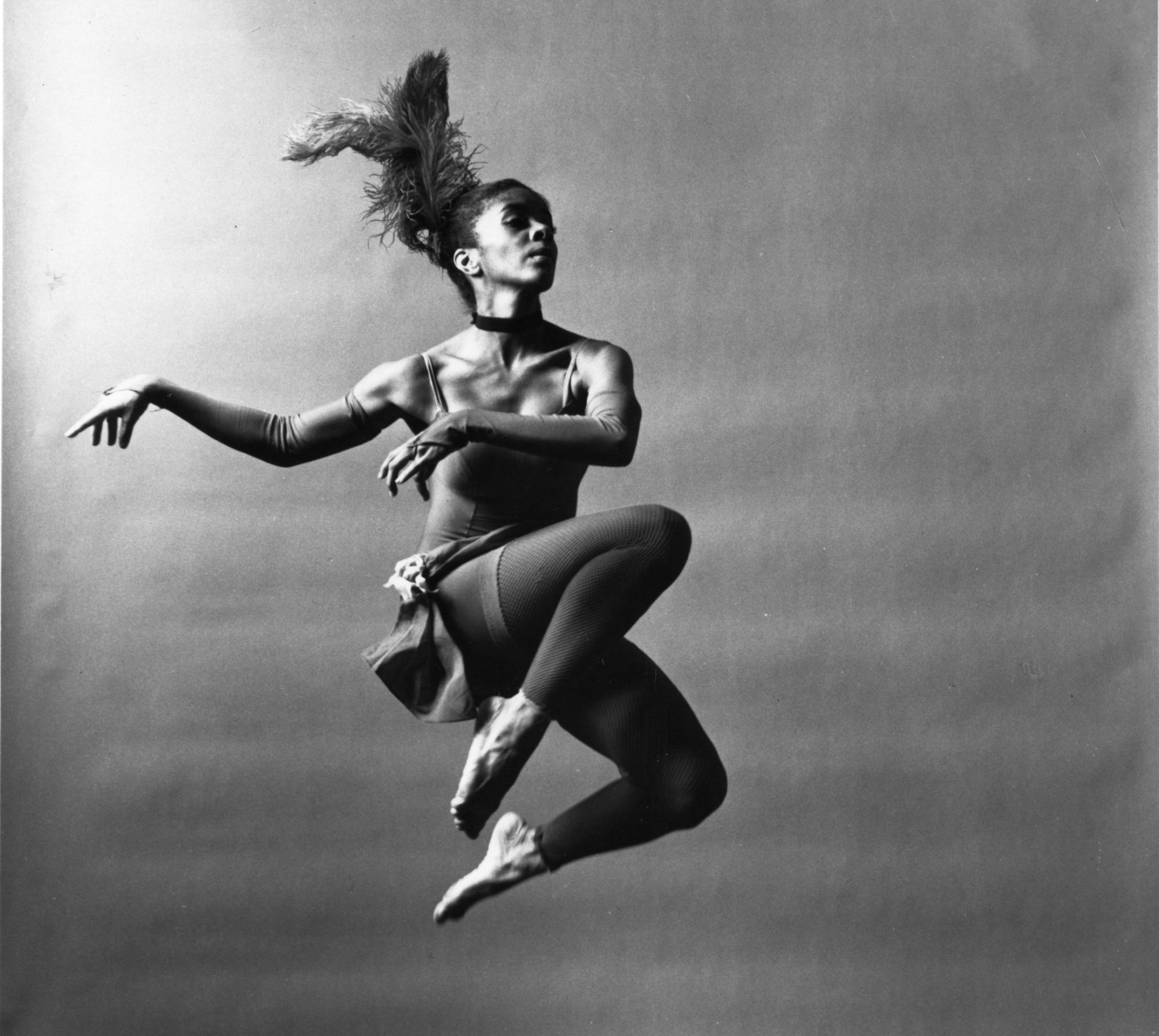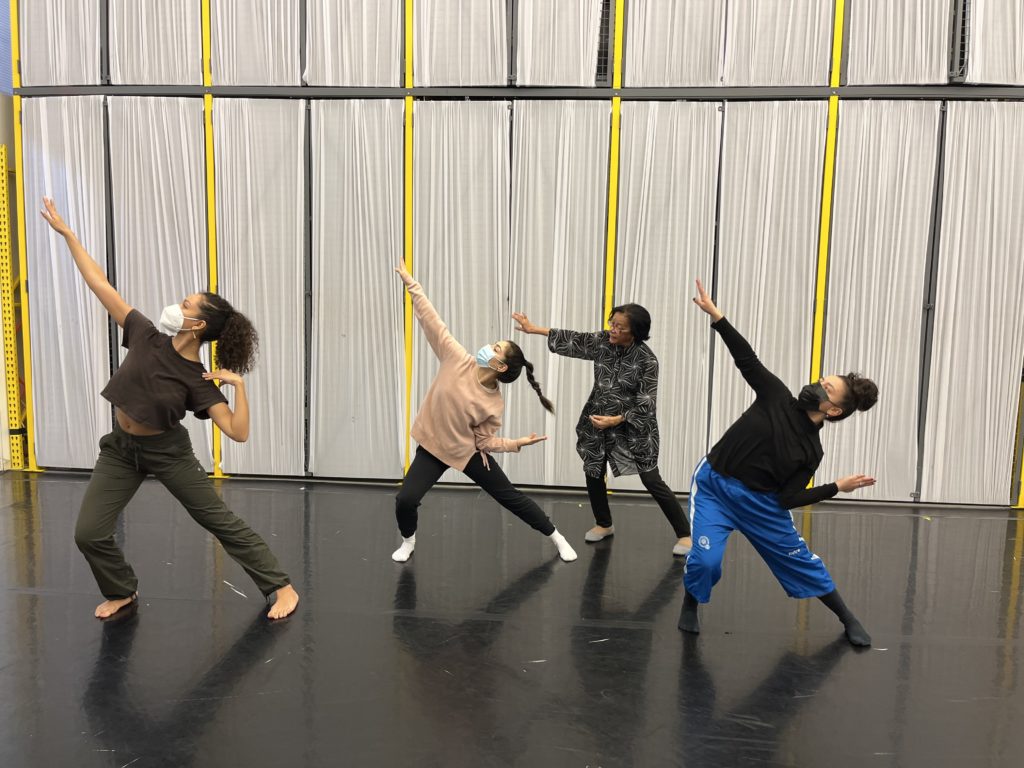
With her new appointment as director of education at Paul Taylor Dance Company, life has come full circle for Carolyn Adams, who began her dance career there in 1965.
Adams has had a distinguished career in the dance world, including being faculty emerita at The Juilliard School and former director of education at Jacob’s Pillow. She is also the founding artistic director of the New York State Summer School of the Arts School of Dance and has chaired Dance/USA’s National Task force on Dance Education.
Dance Teacher spoke to Adams about her storied career, her vision for her new role and her best advice for dance educators.
How did you come to dance for Paul Taylor initially?
I always knew I wanted to be a dancer, but I didn’t really have my sights on a particular company. And back in those days—we’re talking the early ’60s—things were different. There weren’t hundreds of companies. But there was a sense that one could find a place. My elementary school and high school both had dance programs, so I was able to develop my physicality and musicality as a very young child and not know necessarily what my pathway was.
I was in my senior year at Sarah Lawrence College and thought I was going to graduate and dance somewhere—anywhere. I just liked to dance and nothing was going to stop me. There were auditions at Paul Taylor Dance Company, and I went, not thinking I would get picked. There was a long line around the block. Over 200 people were waiting. But I’d heard that Paul was nice and it would be a friendly thing, and I thought, why not go here for my first audition where it would be nice, I would not be traumatized, and I had no expectation of getting a job?
Well, the audition went on and on and I had to tell Paul that I had to leave for an appointment. He told me he was interested in me. But the thought that I would get picked never entered my mind. I told him that I was in my senior year at Sarah Lawrence College. So he said to me, “You have to come back and see me after you graduate,” and I went away feeling very encouraged.
I later learned that Paul called Bessie Schönberg [head of dance at Sarah Lawrence College and a friend of his] that weekend and asked if she would allow me to take classes at the company for a few hours each week so that I could learn the repertory. Paul then asked me to join the company in September of 1965. That is when my journey began.
How significant is it for you personally to have been one of the company’s first Black dancers? Liz Walton, who preceded you, was also Black but was very light-skinned?
It was a nonissue. I don’t want to give the impression that it was a big deal, because it wasn’t. Not just in Paul Taylor’s company—Martha Graham had Asian dancers, she had Black dancers. Gus Solomons jr was with Merce Cunningham. Even the civil rights movement as I experienced it was extremely multiracial. We were all fighting for the same thing. It was when the whole George Floyd thing happened and all these white people said, “Oh, my God, is this what’s really going on?” that it seemed more revelatory to me. But, when I came along, the whole field was integrated with people of all different hues. Not the ballet world, perhaps, but the modern dance field has always been integrated.
What does your new role entail?
I have a wide range of tasks, including teaching, scheduling faculty, planning outreach events, counseling students, overseeing teaching residencies and the restaging of Mr. Taylor’s works. I meet regularly with our artistic director, Michael Novak, to shape and plan for future events and initiatives as The Taylor School interfaces with the Paul Taylor Dance Company.
What are you most excited about in this new chapter?
The first thing I had to do was redo the website, so that was a great opportunity to look at the language—the way we describe what we’re doing—and make sure everybody’s on the same page. And I think we’re marrying the school to the mission of the institution.
Also, the school is growing. We have tiny tots through professionals, and people of all ages in adult classes. We have partnerships with other institutions, including New York City public schools. We also have the Tier 3 program, which provides free tickets for students and families to come to our seasons.
How are you expanding the curricula to be more diverse?
I think diversity is something that happens when you don’t interfere with it. If you’re collaborating with people in different countries, if you’re working in communities, it’s built in. Diversity happens if you leave people alone. I guess it has to do with there being so many communities in this country that are insular, geographically insular. When people separate themselves, then they have to be artificially inclusive.
I think if you create a program that’s representative, you’ll attract diverse people. Part of the goal is to commission works from young choreographers. In fact, young choreographers are all over the place. They’re all doing fascinating work and they’re very different. So if you pick different works, you end up with a diversity of choreographers, and then you make this a community where all kinds of people want to be. And we can see that in the current demographic of this space. I don’t think of diversity as showing people of all colors and all races. I think of diversity as creating an environment where everybody feels welcome. It’s more a function of are we serving a broad spectrum of individuals. That’s the goal. That’s the mission.

What do you think is the importance of mentorship for dancers and dance teachers?
When a young creative artist is developing, questioning and exploring artistic ideas or career ideas, they tend to gravitate toward people that they perceive as good “suppliers,” for lack of a better term. I feel that anybody that I have mentored has really pursued me, and not the other way around. So there’s some kind of recognition in the young artist looking at someone. Either they want to emulate that person or they think “Now, that person has something I need.” And so the importance of it is that students understand that they have a right to do that. The importance of the relationship is to directly recognize in other people some wisdom and different perspectives and knowledge that you want or hope to acquire.
Who was one of your mentors, and what is one thing you learned from this person?
Bessie Schönberg. She was the head of the dance department at Sarah Lawrence College, so she was our teacher and also had the role of officially mentoring all of us. Bessie’s mentoring of me mainly happened after I graduated. That relationship continued until she died. She helped usher me in my professional career with Paul Taylor. In fact, I’ve used everything she taught me my whole career, and I’m now using it as a teacher. Bessie taught me how to see movement, how to look at movement, which is so important for a dancer and a choreographer. She gave me an eye for movement. She taught me what it means to try and make a dance and what the choreographer needs from the dancer. Dancers are trying so hard to do things right that they don’t realize how much influence they have on choreographers. It’s an unspoken thing. But a dancer’s job is to really understand the movement and to bring something to it that is not just the result of following directions. And choreographers will tell you that once a dancer starts moving, the dance is starting to make itself, and the good choreographers will look at what’s in front of their faces. So to really see what’s in front of your face, not what you’re imagining you’re going to make; not your dream about the dance, but the moving body in front of your face—Bessie gave me all of that.
What is one thing you hope for the future of dance education?
I realize what was rich about my career is that I got to do wonderful dances, and I got to do them over time. So that has influenced my educational process. We were asking dancers to have minimal access to repertory, but also, if they did learn, they could never do it again. For instance, you go to a workshop and learn a phrase. But you couldn’t film it. You couldn’t ever do it again. In what other fields do they do that? You don’t tell theater students they can’t do Shakespeare until they are a professional. No, that’s how you get to be a professional. It’s like leaving out a whole piece of their education. So the notion of how we educate the next generation has to do with what we give them access to. My sister [who teaches dance at Brown University] and I started an organization some years ago called Dancing Legacy. We went to some choreographers and said, “If you would like to give the greatest number of people access to some central choreographic ideas, what would they look like?” They created these dances that are in the public domain for students. That’s been part of my life’s work over the past 30 years. So I’m coming back to this job, to this place which I sort of never left, with a really global view of what I think dancers need.
What’s your best advice for today’s dance educators?
Firstly, I really hope they had good teachers. That’s really how it all starts. Then I would say being a dance educator is like being a good choreographer. You look at what is in front of your face. You don’t go in saying, “I’m going to plaster my knowledge on them.” Look at the person and teach that person how to dance. Remember: You don’t teach dance; you teach people how to dance. That gives the teacher so much information because we know that everybody doesn’t learn the same way. If you decide to plaster stuff on them, it’s like reading the encyclopedia from cover to cover. Look at the individual in front of you first, and then begin to teach them what you know.





